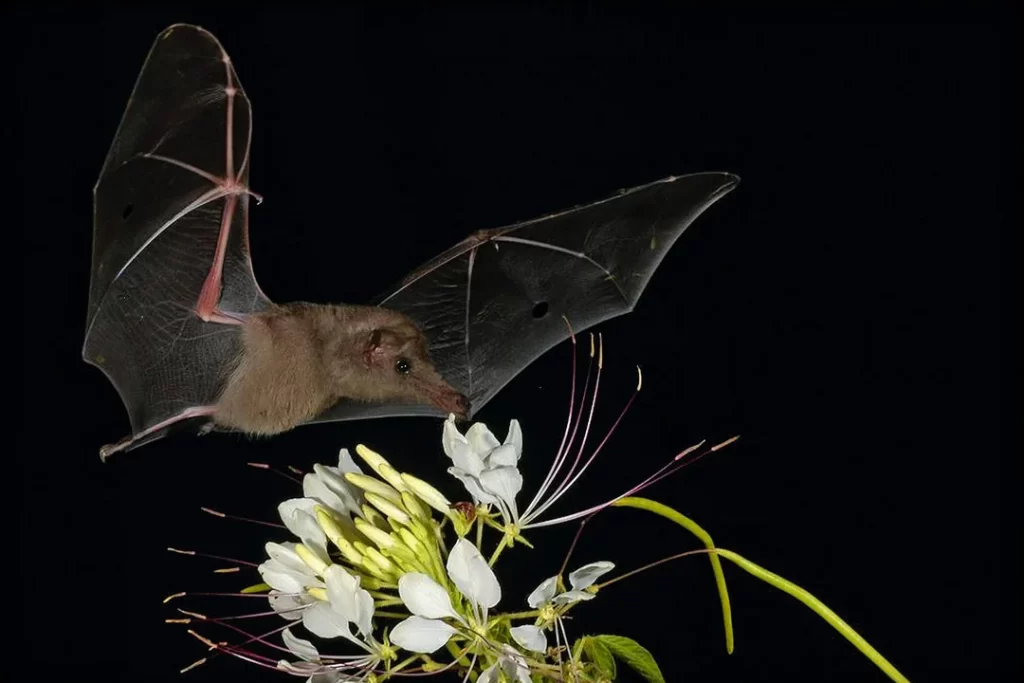
Musonycteris harrisoni
Overview
Musonycteris harrisoni, commonly known as the banana bat or long-nosed bat, is a rare nectar-feeding bat species endemic to Mexico. It belongs to the family Phyllostomidae and is especially noted for its remarkably elongated rostrum, which gives it a distinctive appearance among nectarivorous bats.
Morphological Adaptations
This bat exhibits extreme cranial elongation, with a narrow and tubular snout adapted for deep-flower feeding. It also possesses a long, extensible tongue covered in papillae that aid in nectar extraction. Its skull and jaw structure reflect a high degree of specialization for nectarivory, making it one of the most morphologically adapted bats for this diet.
Feeding and Ecological Role
Musonycteris harrisoni feeds primarily on nectar and pollen, making it an important pollinator for various native plants, including species in the genera Ceiba and Pseudobombax. Its specialized feeding mechanism allows it to reach nectar deep within flowers, facilitating cross-pollination.
Habitat and Distribution
The species is found in dry tropical forests and scrub habitats in the western regions of Mexico, especially in the states of Colima and Jalisco. It is typically associated with areas where suitable flowering plants are abundant.
Conservation Status
Classified as Endangered by the IUCN, Musonycteris harrisoni faces threats from habitat loss due to agriculture, urban expansion, and deforestation. Its limited range and ecological specialization make it particularly vulnerable to environmental change. Conservation efforts focus on habitat protection and further ecological studies to understand its role in pollination networks.
